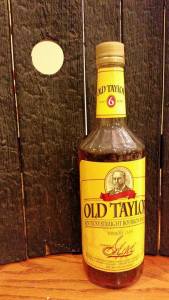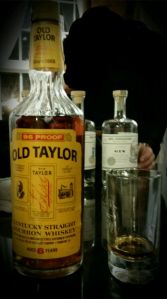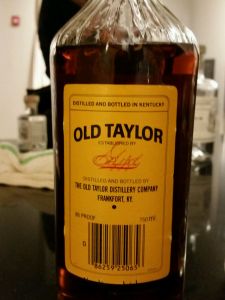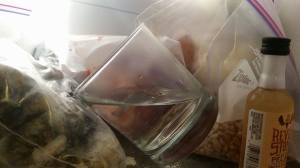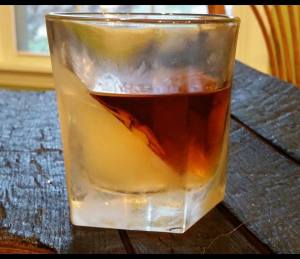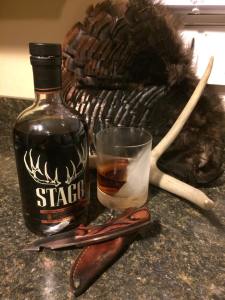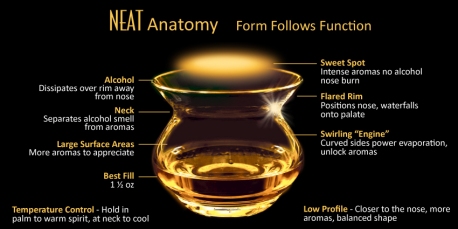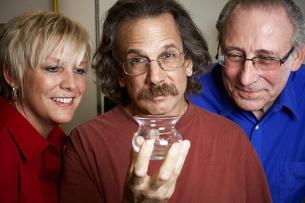Sorry this took so long to get out, I’ve been procrastinating. Hopefully my Bourbon On The Shelf didn’t notice. Enjoy our new rating scales!
Part 1 – Beautiful Bourbon Barrel Scale
We are not, primarily, a bourbon review site. There are plenty of people already doing this, and doing it pretty well. We try to be predominantly about giving you in-depth information about all things surrounding bourbon. However, we like to drink bourbon, and have been continually frustrated by the use of 100 point scales where 75 is terrible and 95 is fantastic. What’s the point of the other 74 points on the scale? How am I, as a prospective bourbon purchaser, supposed to know what the difference between your 90 and 95 is? A 75 is a solid C in most scales, does this mean it’s decent, or you hate it with a passion? In an effort to combat this we have come up with what we feel is a straightforward, reliable way for us to communicate to you, the Bourbon Evangelists, how well we like something we’ve tasted. And as much as possible, we will try and keep availability, part 2 of our rating system, separate from this rating.
The scale is from 0-5 barrels with only half increments allowed. Below is how we’ve decided to break up our scale, and a few examples for reference:
0.5 Barrels – Essentially as low as the scale goes, as 0 would likely be actual turpentine. Our prototypical 0.5 Barrel bourbon is Yellowstone.
1 Barrel – This grade is for bottles that are recognizable as bourbon, but are probably relegated to emergencies such as open bars at weddings and airport bars in foreign counties. These will always need to be mixed to hide their evils. Examples include Jim Beam 4 year, Early Times, Old Crow, etc.
2 Barrels – Getting into voluntarily drinkable territory, these are bourbons that aren’t bad, but you’ll probably still want to mix them. Some may be OK on their own with ice. Not objectionable, but not something you’d seek out. Examples include things like Kentucky Tavern and Very Old Barton 80 Proof.
2.5 Barrels – For the middle of the scale we’ve selected Maker’s Mark as the benchmark for a solid, drinkable bourbon. Always consistent, always pleasant, this is what we use as a standard to help sort out the other rankings.
3 Barrels – This is where things start to get good. A 3 Barrel bourbon is something you’d want regularly on your shelf, and is generally versatile enough to use as a mixer or sipper. Not something that will wow your friends, but you’d be happy drinking it most anytime. Eagle Rare Small Batch (the new one) is around this range. When you move up to 3.5 Barrels you get into things like Elmer T. Lee and Knob Creek Single Barrel.
4 Barrels – 4 Barrel Bourbons are all around great. Likely something to be sipped neat or with a splash of water, these are special occasion type bottles that you’ll want to share with friends. If we give it 4 Barrels, we’re essentially telling you that you need to try it, and we’d darn near guarantee that you’ll like it. 4.5 Barrel bourbons are the best of what we’ve tasted.
5 Barrels – This rating is essentially unattainable and is reserved for masterpieces that envelop all of your senses. We’re not really sure we’ve ever tasted a 5 Barrel bourbon, but we’ll definite let you know when we do.
Part 2 – Rarity Scale
In addition to our Beautiful Bourbon Barrel Scale (the “BBB”), we wanted to add an indicator to let our fellow Bourbon Evangelists know just what to expect when trying to find some of the bourbons we are rating. With demand over the world for good bourbon growing daily, and a supply lag time of a good decade, this rarity scale, we feel, is a necessary addition to any bourbon rating system. Our BR system is the first and only one that exists with a supplementary availability rating system which makes this both ground breaking and record-setting in addition to extremely helpful.
Just like our 5 barrel BBB system for the quality of the bourbon, our rarity scale will be equally simple and informative. As we often refer to bourbon shopping as bourbon hunting, we have chosen five (5) animals which should be pretty darn intuitive to readers when it comes to common versus vanishingly rare. We’ve got our explanations below, as well as a few examples.
From most to least common:
Squirrel: Sciurus carolinensis
Squirrels are everywhere. In fact, the grey squirrel has essentially made the much more attractive and desirable red squirrel a very rare find. Squirrel bourbons don’t necessarily need to push out others for this rating, but that is a possibility merely due to the ubiquitous nature of the product.
Examples: Jim Beam (white label), Jack Daniels (“Tennessee Whiskey”)
Albino* examples: Maker’s Mark, Old Forrester, Ancient Age
*For this scale, an “albino” animal means somewhat less common than the normally-pigmented animal version, but not as rare as the next animal level higher. A .5 if you will.
Deer: Odocoileus virginianus
Deer are very common, beautiful creatures. They are easy to find when hunting, but you have to know where to look. They usually aren’t running around during the afternoon, but they come out at night and can even be found roaming your suburban front yards. You just have to pay attention or you can easily miss them. A permit is not required for hunting a deer-rated bourbon, but it helps to know what field liquor stores carry them. Your run of the mill liquor store on the gas station off the interstate exit ramp generally won’t carry deer. Large chains and good independent liquor stores with knowledgeable staff carry these bourbons regularly with year-round availability.
Examples: Willett Pot Still, Bulleit, Knob Creek
Albino examples: Bulleit 10 year, Old Charter #8 (previously 8 year)
Bear: Ursus americanus
The bear is a mighty animal. Mighty and sleepy. They hibernate for half the year! If you want to hunt a bear, you have to go out at the right time of the year. Everyone had a stuffed version to snuggle with which made them feel secure and warm. Bear bourbons are the same way. These are limited releases, generally once per year (eg. “The Fall release”). This means you have to plan your bourbon hunting trip, and know when hunting season is. Hunting for these out of season won’t land you in jail or fined for poaching, but it will probably get you a good chuckle from the liquor store staff/game warden at your expense. Bear-rated bourbons are usually high-quality and highly sought after bourbons which will generally come with a high BBB rating.
Examples: Old Forester Birthday Bourbon, Four Roses Limited Editions
Giraffe: Giraffa camelopardalis
Ah, the noble giraffe. These long-necked ungulates can only be found in Africa, a zoo, or the odd rock star’s back yard. As with bears, these are generally limited releases and often then only to specific geographic areas. To hunt giraffe bourbons, you have to first know they exist, know the release period/when hunting season is, plan a special trip to the Serengeti/special liquor store or distillery, and then in the end, it doesn’t hurt to capture a Leprechaun and get him to grant you a good luck wish.
Examples: Buffalo Trace Antique Collection, Michter’s 10 Year Single Barrel
Unicorn: Goodluck findingus
The unicorn is an allegedly mythical creature that is basically a horse with a horn on its head. They don’t exist, their meat may or may not contain sparkles, and they may or may not poop rainbows. Their bourbon counterparts would be next to nonexistent and would include test bottles from distillers, special bottles that only distillers/company big-wigs get for themselves, and other extra small productions.
Examples: Journeyman Reserve Rye (140 bottles made), Nectar bourbon accompanying ambrosia at a dinner at Zeus’ house, the 100-year-old bourbon bottles recently opened in Louisville
At the end of the day, a 5 Barrel Albino Unicorn doesn’t exist. We’ve purposefully designed this scale for accuracy, precision, and usability. It’s much more helpful than the esoteric 1-100 system or a generic star system with no guiding standards. We will be using this scale along with our BR scale to rate bourbons from here on out. Cheers!
Note bene: The examples above are subject to change due to the variability and unpredictable nature of the bourbon supply at this time.

